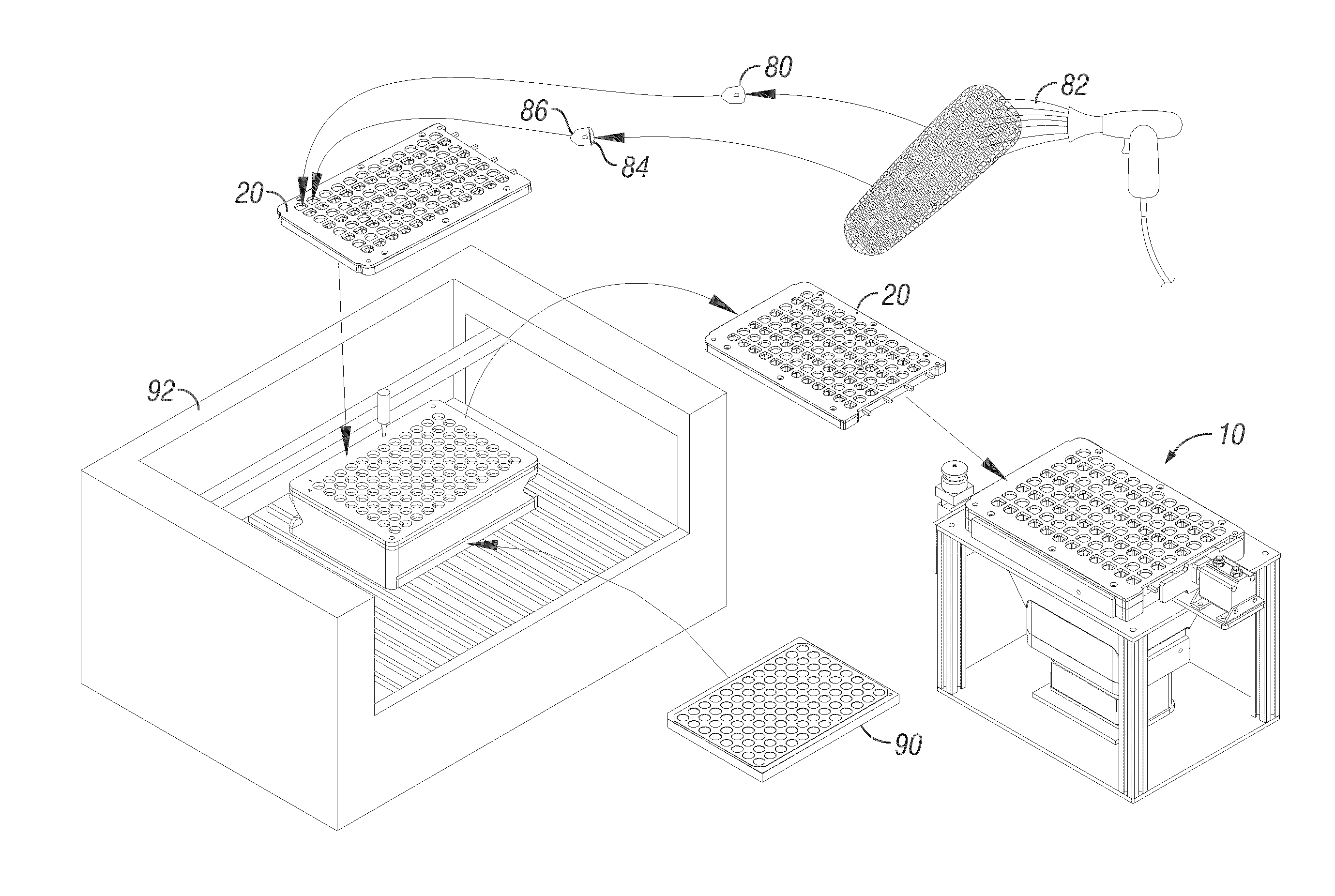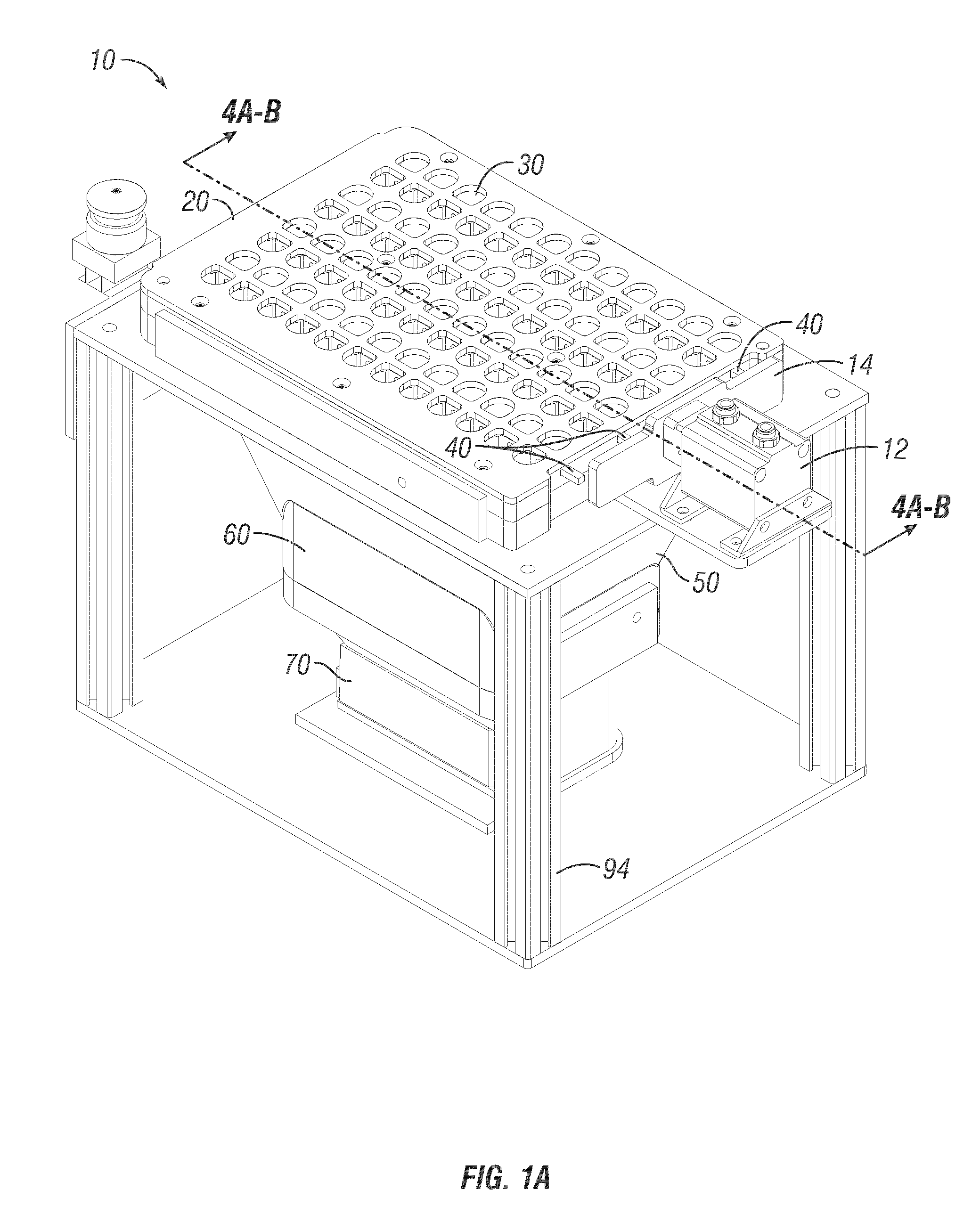Apparatus, method and system for creating, collecting and indexing seed portions from individual seed
a seed and individual seed technology, applied in the field of apparatus, method and system for creating, collecting and indexing seed portions from individual seeds, can solve the problems of large waste of land, labor and material resources, waste of seed, and large amount of seed, and achieve accurate high throughput separation of seed and seed portions, reduce contamination, and reduce the effect of contamination
- Summary
- Abstract
- Description
- Claims
- Application Information
AI Technical Summary
Benefits of technology
Problems solved by technology
Method used
Image
Examples
Embodiment Construction
[0038]FIG. 1A is a perspective view showing the apparatus according to an exemplary embodiment of the present invention
[0039]FIG. 1B is a drawing showing various stages of the system by which the seeds are coated, removed, separated into crown and body, and finally indexed.
[0040]FIG. 1C is an exploded perspective view of the apparatus shown in FIG. 1A.
[0041]FIG. 2 is a perspective view of the seed carrier shown in FIG. 1A.
[0042]FIG. 3 is a top view of the seed carrier shown in FIG. 2.
[0043]FIG. 4A is a sectional view of the apparatus taken along line 4A-4A in FIG. 1A.
[0044]FIG. 4B is another sectional view of apparatus taken along line 4B-4B in FIG. 1A.
[0045]FIG. 5 is a perspective view of the seed carrier shown in FIG. 2.
[0046]FIG. 6 is a top view of a first plate of the seed carrier shown in FIG. 5.
[0047]FIG. 7 is a perspective view of a second plate of the seed carrier shown in FIG. 5.
[0048]FIG. 8 is a perspective view of an exemplary embodiment of a partition bar of the seed car...
PUM
| Property | Measurement | Unit |
|---|---|---|
| weight | aaaaa | aaaaa |
| non-magnetic | aaaaa | aaaaa |
| resistance | aaaaa | aaaaa |
Abstract
Description
Claims
Application Information
 Login to View More
Login to View More - R&D
- Intellectual Property
- Life Sciences
- Materials
- Tech Scout
- Unparalleled Data Quality
- Higher Quality Content
- 60% Fewer Hallucinations
Browse by: Latest US Patents, China's latest patents, Technical Efficacy Thesaurus, Application Domain, Technology Topic, Popular Technical Reports.
© 2025 PatSnap. All rights reserved.Legal|Privacy policy|Modern Slavery Act Transparency Statement|Sitemap|About US| Contact US: help@patsnap.com



